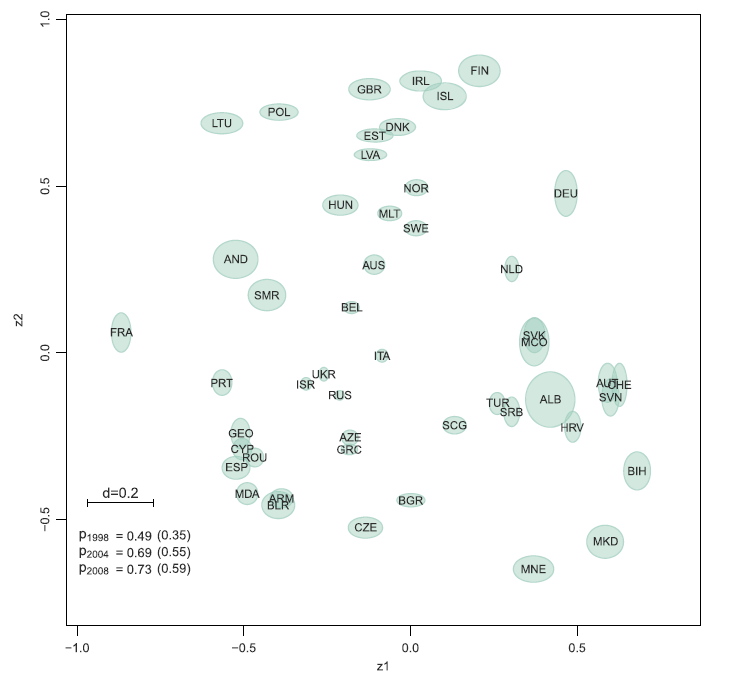Latent space modeling of multidimensional networks with application to the exchange of votes in the Eurovision Song Contest.

D’Angelo, S., Murphy, T.B. and Alfò, M. (2019).
Annals of Applied Statistics.
The Eurovision Song Contest is a popular TV singing competition held annually among country members of the European Broadcasting Union. In this competition, each member can be both contestant and jury, as it can participate with a song and/or vote for other countries’ tunes. During the years, the voting system has repeatedly been accused of being biased by tactical voting; votes would represent strategic interests rather than actual musical preferences of the voting countries. In this work, we develop a latent space model to investigate the presence of a latent structure underlying the exchange of votes. Focusing on the period from 1998 to 2015, we represent the vote exchange as a multivariate network: each edition is a network, where countries are the nodes and two countries are linked by an edge if one voted for the other. The different networks are taken to be independent replicates of a conditional Bernoulli distribution, with success probability specified as a function of a common latent space capturing the overall relationships among the countries. Proximity denotes similarity, and countries close in the latent space are more likely to exchange votes. If the exchange of votes depends on the similarity between countries, the quality of the competing songs might not be a relevant factor in the determination of the voting preferences, and this would suggest the presence of some bias. A Bayesian hierarchical modelling approach is employed to estimate the parameters, where the probability of a connection between any two countries is a function of their distance in the latent space, network-specific parameters and edge-specific covariates. The estimated latent space is found to be relevant in the determination of edge probabilities, however, the positions of the countries in such space only partially correspond to their actual geographical positions.